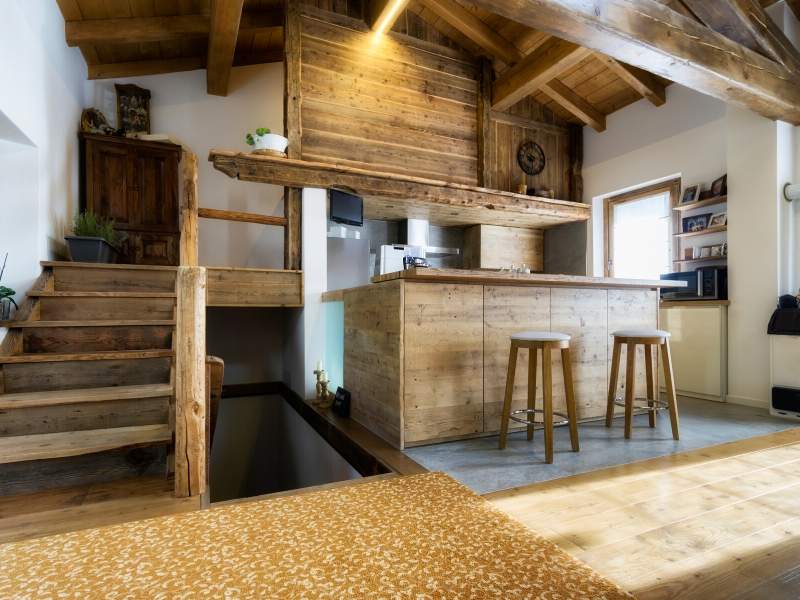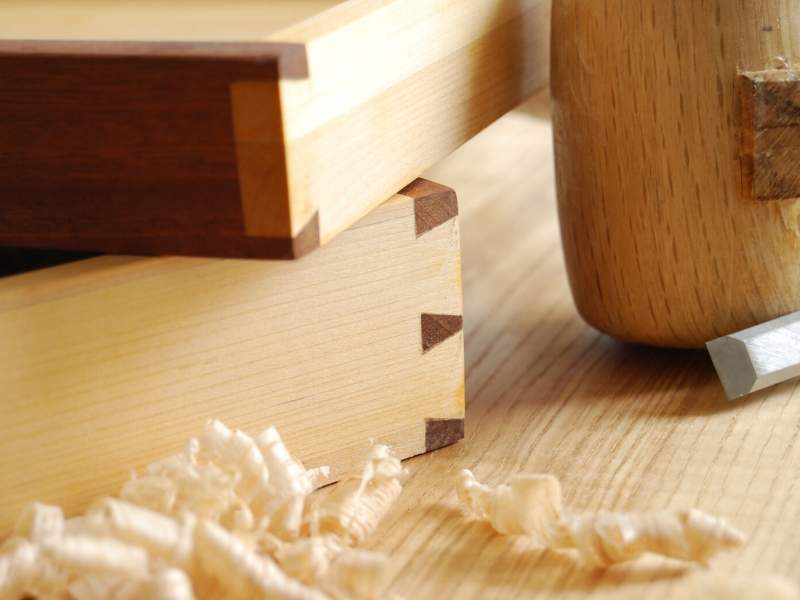When you shop for furniture for your home, how do you choose between solid wood or veneer? There is basic information available to make an informed decision about the quality and longevity of furniture you and your family will enjoy in your home for years to come.
So, before you decide between solid woods or veneer finishes for your new furniture, here are a few details for you to consider.
Solid Wood vs. Veneer Furniture Considerations
First, there are two things to look for in both your solid wood and veneer furniture: composition and construction.
Solid Wood Composition

Did you know that hardwood is from a deciduous tree and softwood is from a coniferous tree? Consequently, the names ‘hardwood’ and ‘softwood’ are misleading because some hardwoods are softer than some softwoods. In addition to the type of wood, ask questions about the origin of the wood. For instance, Californian Redwood and Brazilian Redwood are different trees, both with good qualities uniquely their own. These are distinctions that might make a difference over time so be sure to thoroughly research the different types of wood that appeal to you.
One of the nicest things about solid wood is that wood can be stained or bleached to alter its original color. As an alternative to the high cost of new furniture, instead, apply a new stain to your furniture that goes with your new or current decor.
Veneer Composition

The beauty of veneer furniture comes from the thin layer of wood placed over the top of the base. This gives your furniture the warmth and feel of solid wood while sometimes at a lower price. The most common composition of veneer furniture is particleboard or hardboard.
The quality of the veneer depends on the type of product that is underneath the veneer. A good example is when a higher quality base product is used, such as medium density fiberboards. Along with a good veneer finish, medium density fiberboards make great quality furniture in your home.
Construction Quality

Now let’s look at the construction quality of your solid wood or veneer furniture. For instance, if any glue is visible on the joint construction, skip that piece of furniture. Also, avoid furniture constructed with staples or nails. Instead, look for furniture that put together with dowels or screws. Note that the best joints used in quality construction are either dovetail or mortise-and-tenon. In addition, look at the inside corners for block reinforcements attached at an angle. This is a sign of quality construction.
Solid wood furniture is not always of better quality than veneer furniture. The fact remains that many high-quality furniture manufacturers use veneers and construct it well. However, the downside to veneer furniture is that if the base and the face veneer is not of sufficient quality, the veneer peels off the base.
One inspection tip is to run your fingernail along the edge of the veneer to check for gaps or loose spots. When they are present, the veneer might eventually peel off the base. In addition, check underneath tables, pull out drawers, slide-out shelves, and especially, check the areas without the veneer cover.
After weighing these facts, we recommend that you search for solid wood furniture but also consider high-quality veneers. The more you learn about solid wood and veneer furniture, the more confident you will be about your furniture purchases. Continue to do your research to be sure that the furniture you select will deliver years of enjoyment and happy memories to your family and guests.
Images Courtesy of Canva.
Other Posts You Might Enjoy:
Furniture for Your Home: Tips to Stay on Budget
Furniture Tips for Proper Care and Maintenance





